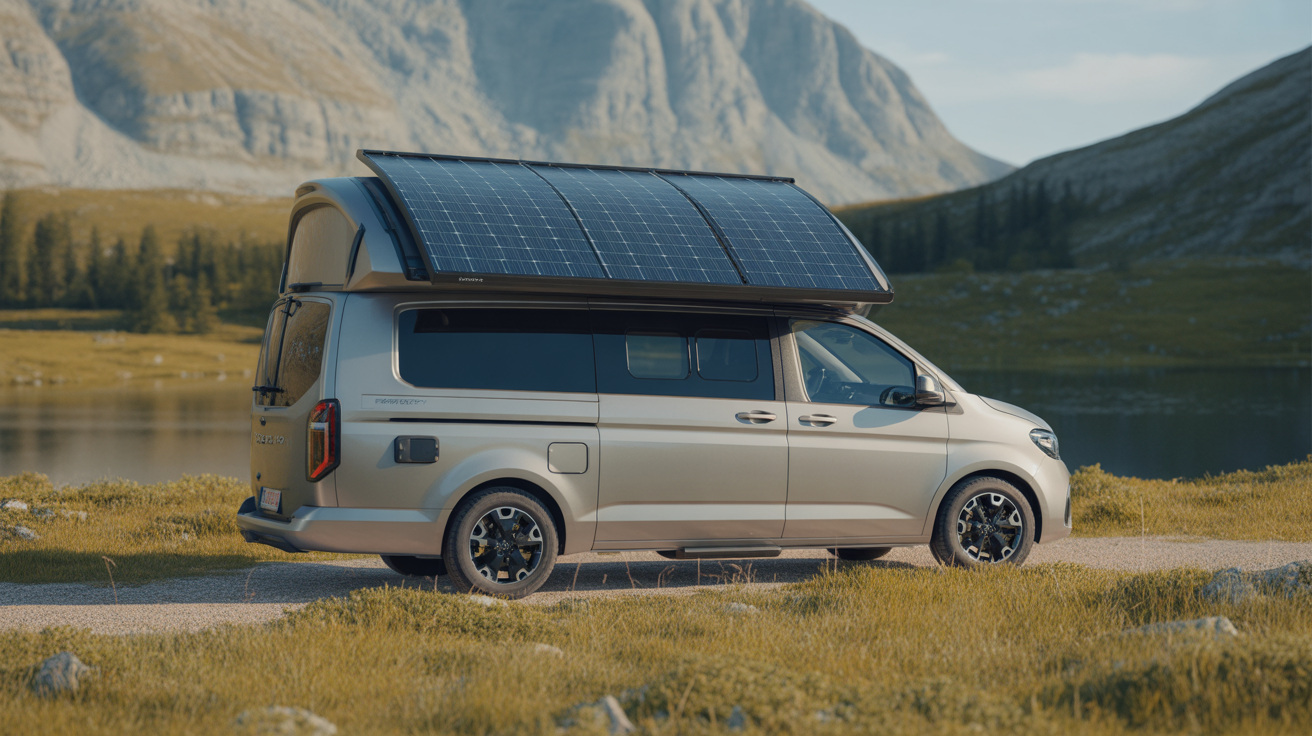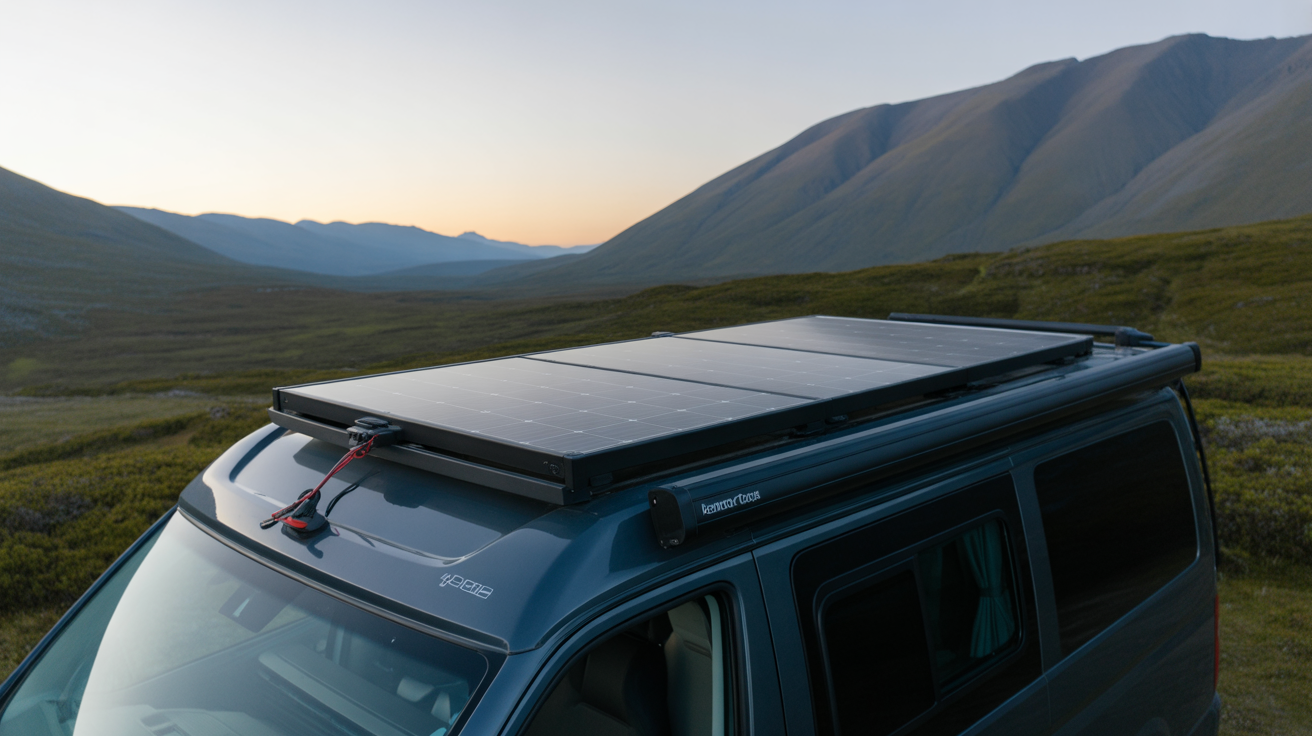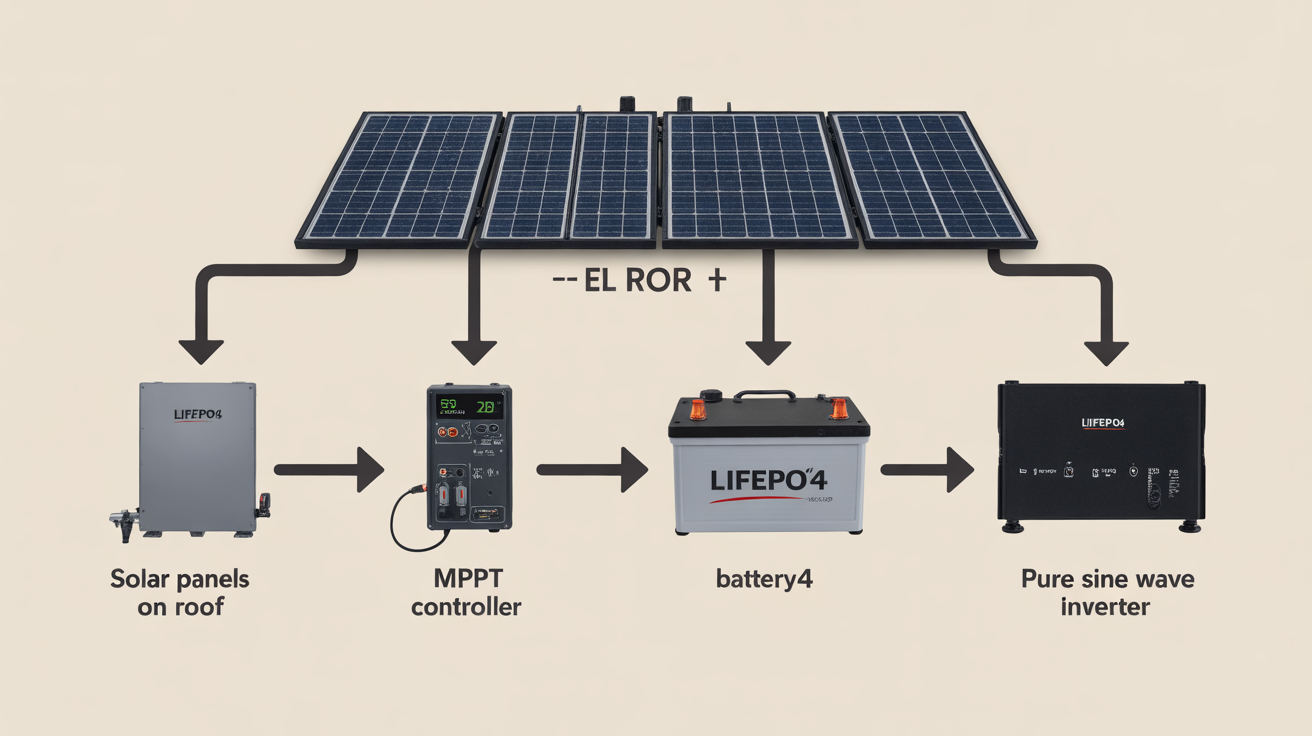Planning a summer road trip in your campervan brings the promise of long sunny days and outdoor adventures. To fully enjoy that freedom, a reliable 12V solar system is essential. Sizing that system correctly ensures your refrigerator stays cold, your devices stay charged, and your lights stay on. This guide provides a clear process for determining the right solar setup for your summer travels, focusing on real-world usage and efficient components.
Step 1: Calculate Your Summer Power Consumption
Before you can determine your solar needs, you must first understand your power usage. An energy audit is a detailed look at every 12V appliance you plan to use. Summer trips often mean higher energy consumption than you might expect, as refrigerators work harder and fans run longer.
Auditing Your 12V Appliances
Create a list of all your DC appliances. For each one, find its power draw in watts and estimate how many hours you will use it per day. Multiplying these two numbers gives you the daily energy consumption in watt-hours (Wh). Summing these values provides your total daily energy requirement.
| Appliance | Power Draw (Watts) | Daily Usage (Hours) | Daily Energy (Watt-hours) |
|---|---|---|---|
| 12V Compressor Fridge | 50 W | 8 hours (cycling) | 400 Wh |
| LED Lights (x4) | 12 W (3W each) | 4 hours | 48 Wh |
| Roof Fan | 30 W | 6 hours | 180 Wh |
| Water Pump | 60 W | 0.5 hours | 30 Wh |
| Device Charging (Phones/Laptop) | 25 W | 4 hours | 100 Wh |
| Estimated Daily Total | 758 Wh |
Factoring in Summer-Specific Loads
The table above is a baseline. In the peak of summer, your refrigerator's compressor may run more frequently to maintain its temperature, increasing its daily consumption. You might also use fans for more hours or charge extra equipment like cameras and drones. It is wise to add a 15-20% buffer to your total daily energy estimate to account for these variables and ensure you have sufficient power.

Step 2: Sizing Your Solar Panel Array for Peak Sun
With your daily energy needs calculated, you can determine the solar panel wattage required to replenish that energy. Summer offers the advantage of longer days and more intense sunlight, which is measured in 'peak sun hours'.
Understanding Peak Sun Hours
Peak sun hours represent the number of hours per day when the sun's intensity averages 1,000 watts per square meter. This is the optimal condition for solar panel output. During summer, many regions receive 5 to 7 peak sun hours daily. This extended period of strong sunlight is a significant advantage for campervan solar systems. As noted in the Solar Energy Perspectives report by the IEA, maximizing energy capture during these optimal periods is key to system efficiency.
The Sizing Formula: From Consumption to Watts
The formula to size your solar array is straightforward. Divide your total daily watt-hours by the available peak sun hours. It is also critical to account for system inefficiencies, such as energy loss from wiring and component heat, by adding a buffer.
Formula: (Total Daily Watt-hours / Peak Sun Hours) * 1.25 (25% buffer) = Required Solar Panel Wattage
Using our example: (758 Wh / 5 hours) * 1.25 = 190 Watts. A 200-watt solar panel array would be a suitable starting point for this scenario. This buffer ensures you can still generate sufficient power on days with intermittent clouds.
Step 3: Matching Your Battery Bank to Your Needs
Your battery bank stores the energy generated by your solar panels for use at night or on overcast days. The right battery capacity provides a reliable power supply and protects the health of your system.
Why LiFePO4 is the Standard
Lithium Iron Phosphate (LiFePO4) batteries have become the preferred choice for modern campervan power systems. They offer a greater depth of discharge (80-90% or more) compared to traditional lead-acid batteries. They are also significantly lighter and provide a much longer lifespan, delivering thousands of charge cycles. This makes them a durable and efficient investment for long-term travel.
Calculating Battery Capacity in Amp-Hours
To size your battery bank, first convert your daily energy consumption from watt-hours to amp-hours (Ah) by dividing by the system voltage (12V).
Formula: Total Daily Watt-hours / 12V = Daily Amp-hours
Example: 758 Wh / 12V = 63.2 Ah
Next, decide on your desired autonomy—the number of days you want your system to run without any solar input. For summer trips where sunny days are frequent, 1 to 2 days of autonomy is typically sufficient.
Formula: Daily Amp-hours * Days of Autonomy = Required Battery Capacity
Example for 1.5 days of autonomy: 63.2 Ah * 1.5 = 94.8 Ah. A 100Ah LiFePO4 battery would comfortably meet this need, allowing you to use nearly its full capacity without issue.
Bringing It All Together: Supporting Components
A balanced system requires that all components work together seamlessly. The charge controller and inverter are critical links between your solar panels, batteries, and appliances.
The Role of the MPPT Charge Controller
A Maximum Power Point Tracking (MPPT) charge controller optimizes the energy harvest from your solar panels. It intelligently adjusts its input to draw the maximum power possible, delivering up to 30% more energy than older PWM controllers, especially in changing weather conditions. The controller should be sized to handle the maximum current (amps) and voltage of your solar array.
Inverters for AC Power
If you need to power standard household appliances that use AC power (like a laptop charger or kitchen blender), you will need an inverter. A pure sine wave inverter is recommended as it provides clean, stable power suitable for sensitive electronics. Size the inverter based on the combined wattage of all AC devices you plan to use simultaneously. For example, if you need to run a 600W blender and a 100W charger at the same time, an inverter rated for at least 1000W would provide a safe margin.
Final Thoughts on Your Summer Solar Setup
Building a reliable 12V solar system for summer campervan trips comes down to a simple, three-part process: calculating your energy use, sizing your solar array for peak sun, and matching it with an adequate LiFePO4 battery bank. By carefully auditing your appliances and planning for the long, sunny days of summer, you can create a balanced and efficient system. This preparation allows you to enjoy true energy independence, keeping your focus on the adventure ahead.
Frequently Asked Questions
How many watts of solar do I need for a campervan fridge?
A typical 12V compressor fridge uses between 300-600 Wh per day. To support this load alone during summer (with 5 peak sun hours), you would need approximately 100-150 watts of solar panels. Always check the specifications of your particular fridge model for an accurate calculation.
Can I rely solely on solar power during a week-long summer trip?
Yes, in many cases, you can. During summer, the long days and high sun intensity often allow a properly sized solar system to fully recharge your batteries daily. However, it is wise to have a backup charging method, like a DC-to-DC charger connected to your vehicle's alternator, for consecutive cloudy days or unforeseen high usage.
Do I need to tilt my solar panels in the summer?
While tilting panels towards the sun can increase output, it is generally not necessary for flat-mounted panels in the summer. The sun is high in the sky for much of the day, which provides excellent charging angles. The convenience of fixed, flat-mounted panels often outweighs the marginal gains from tilting during this season.
Is it better to have more solar panels or a larger battery bank for summer?
For summer travel, prioritizing solar panel wattage is often more beneficial. With abundant sunshine, a larger solar array allows you to quickly recharge your batteries during the day and run appliances directly from solar power. A battery bank sized for 1-2 days of autonomy is usually sufficient, as you can reliably expect to recharge it the following day.





Leave a comment
All comments are moderated before being published.
This site is protected by hCaptcha and the hCaptcha Privacy Policy and Terms of Service apply.